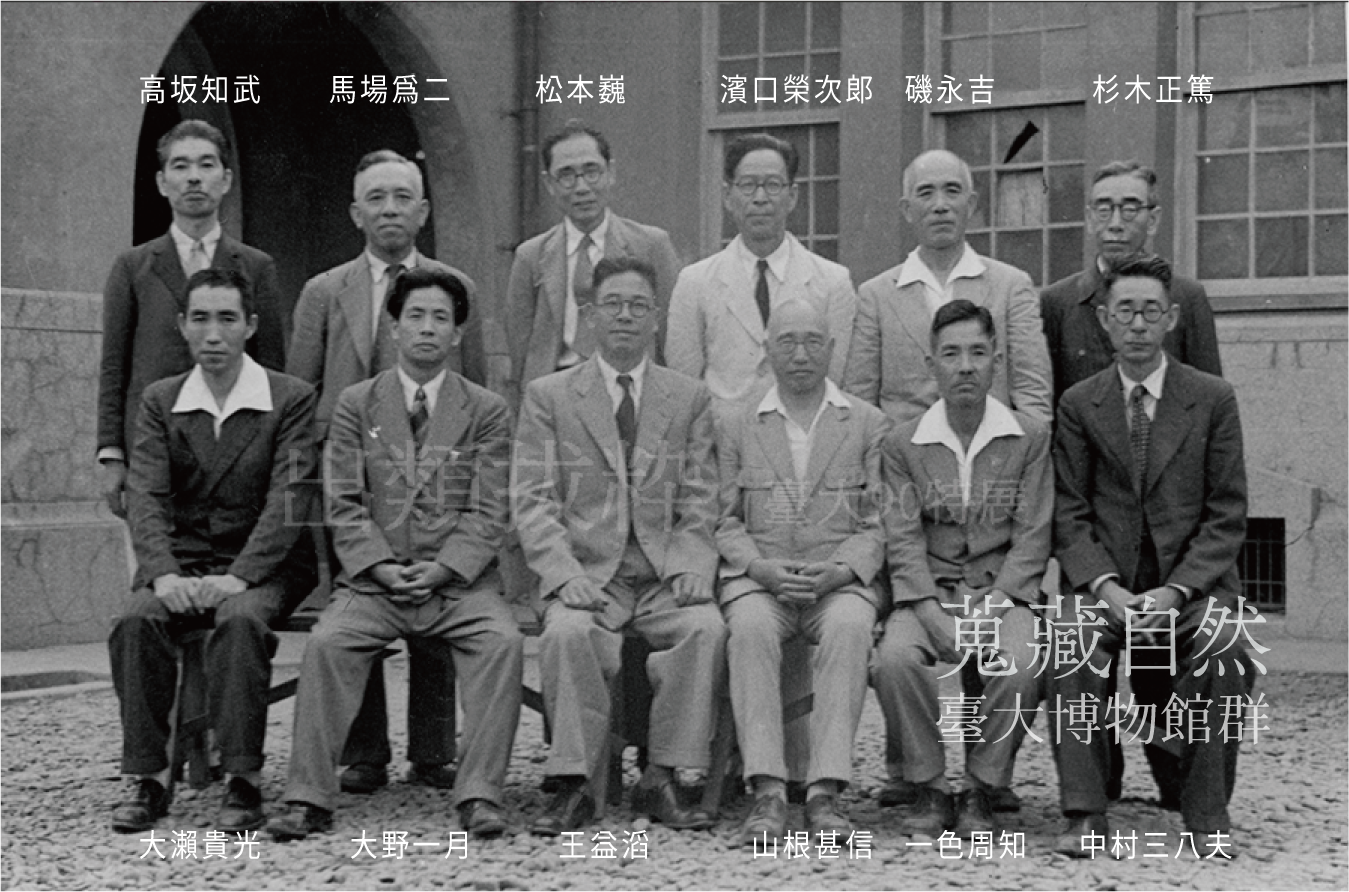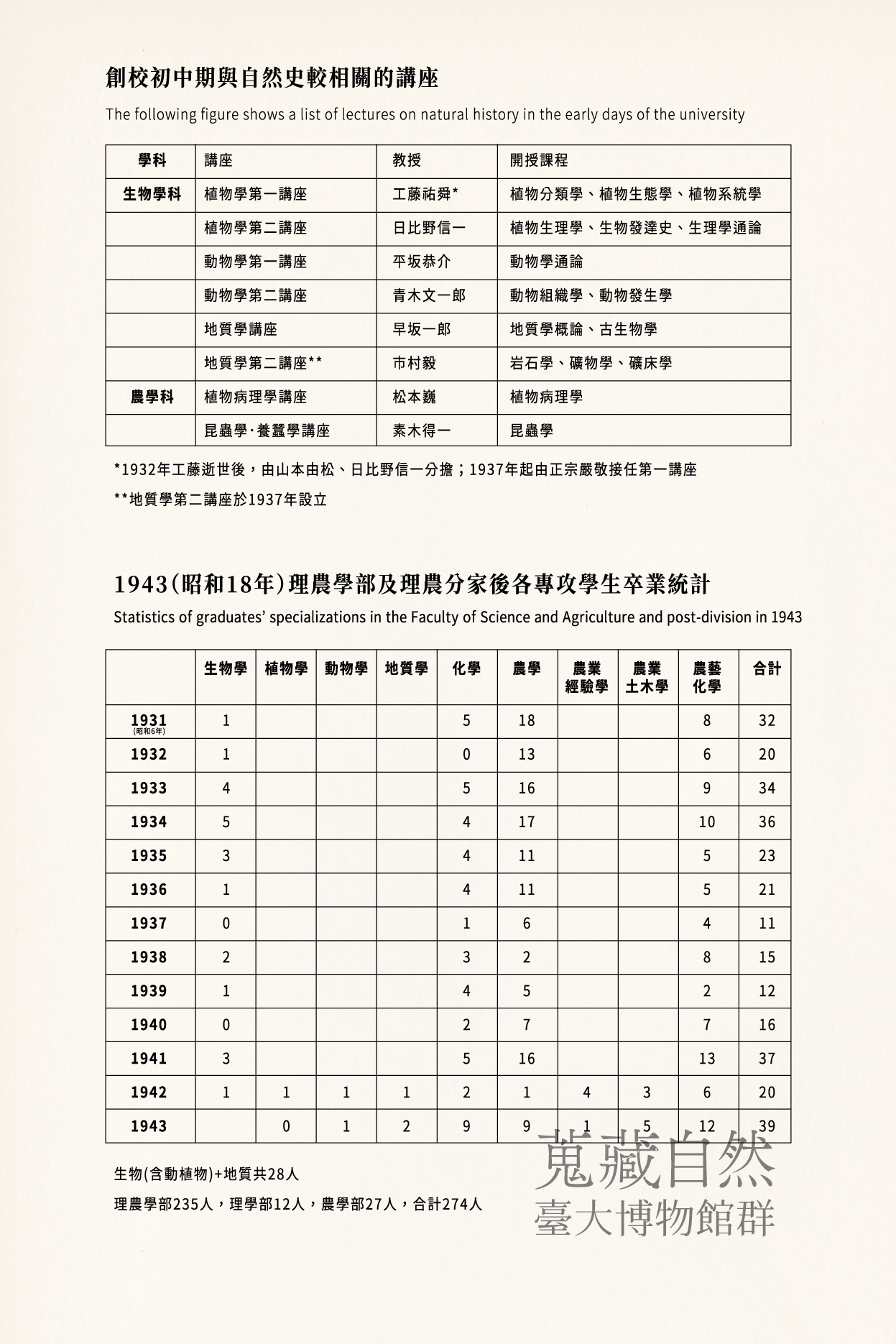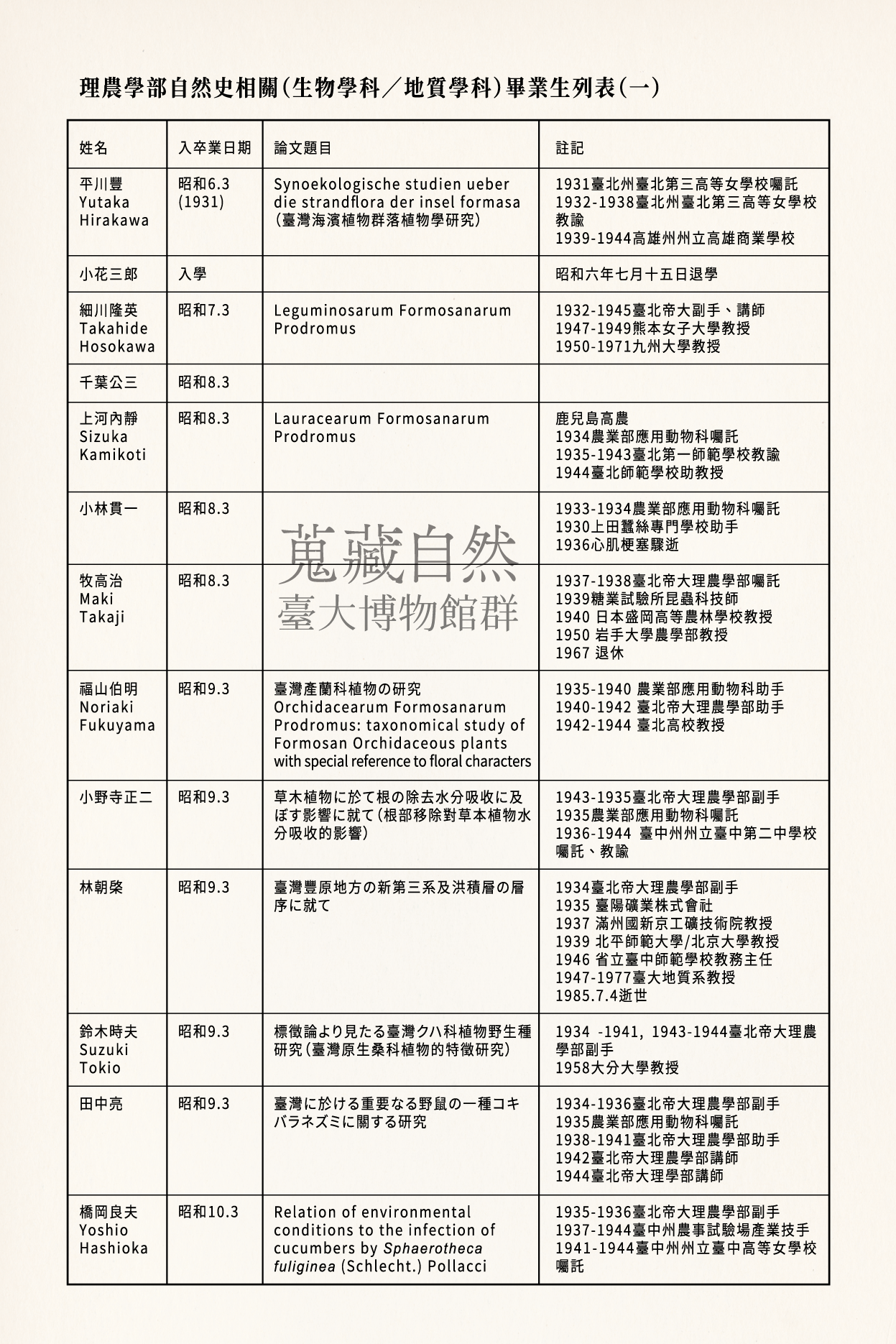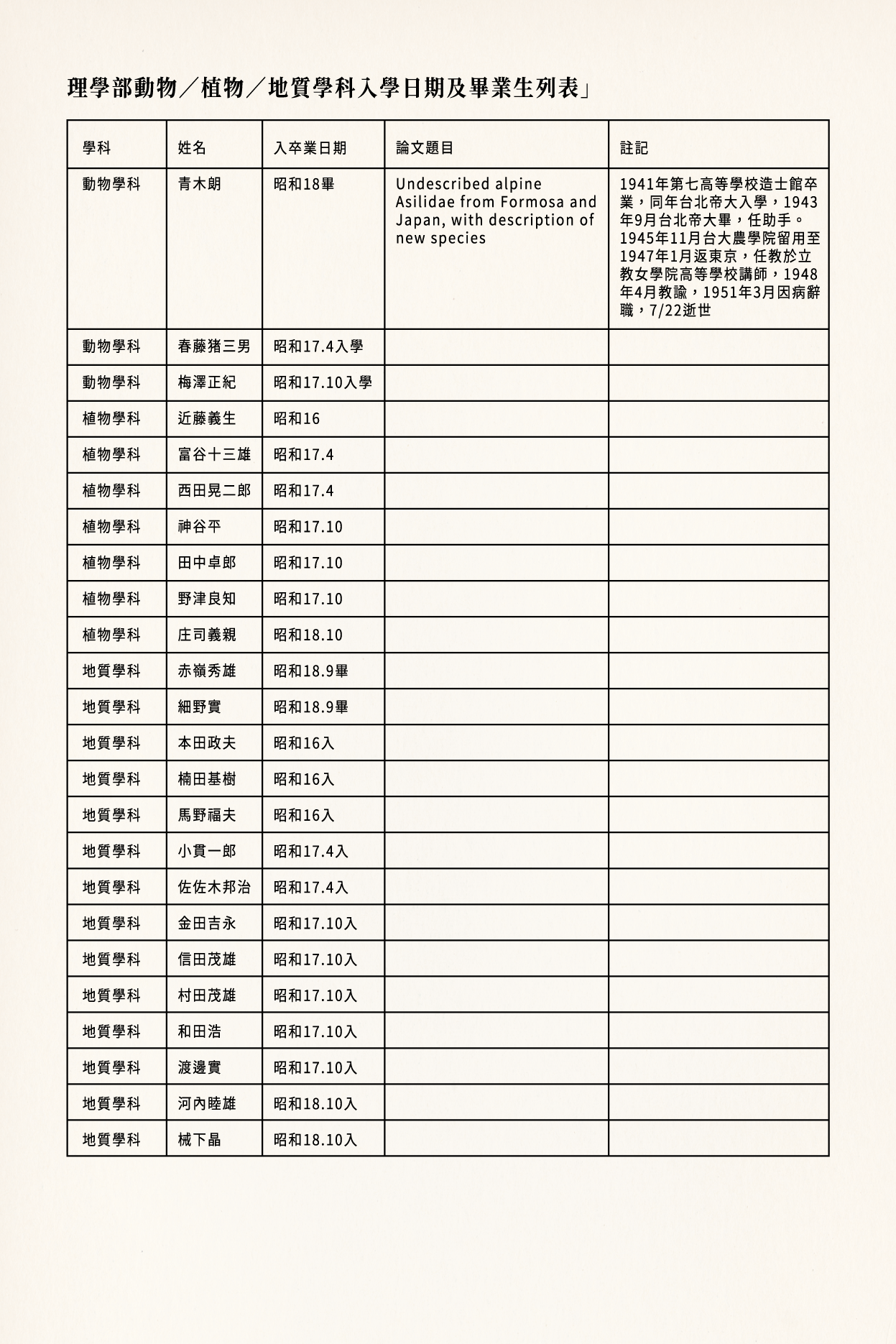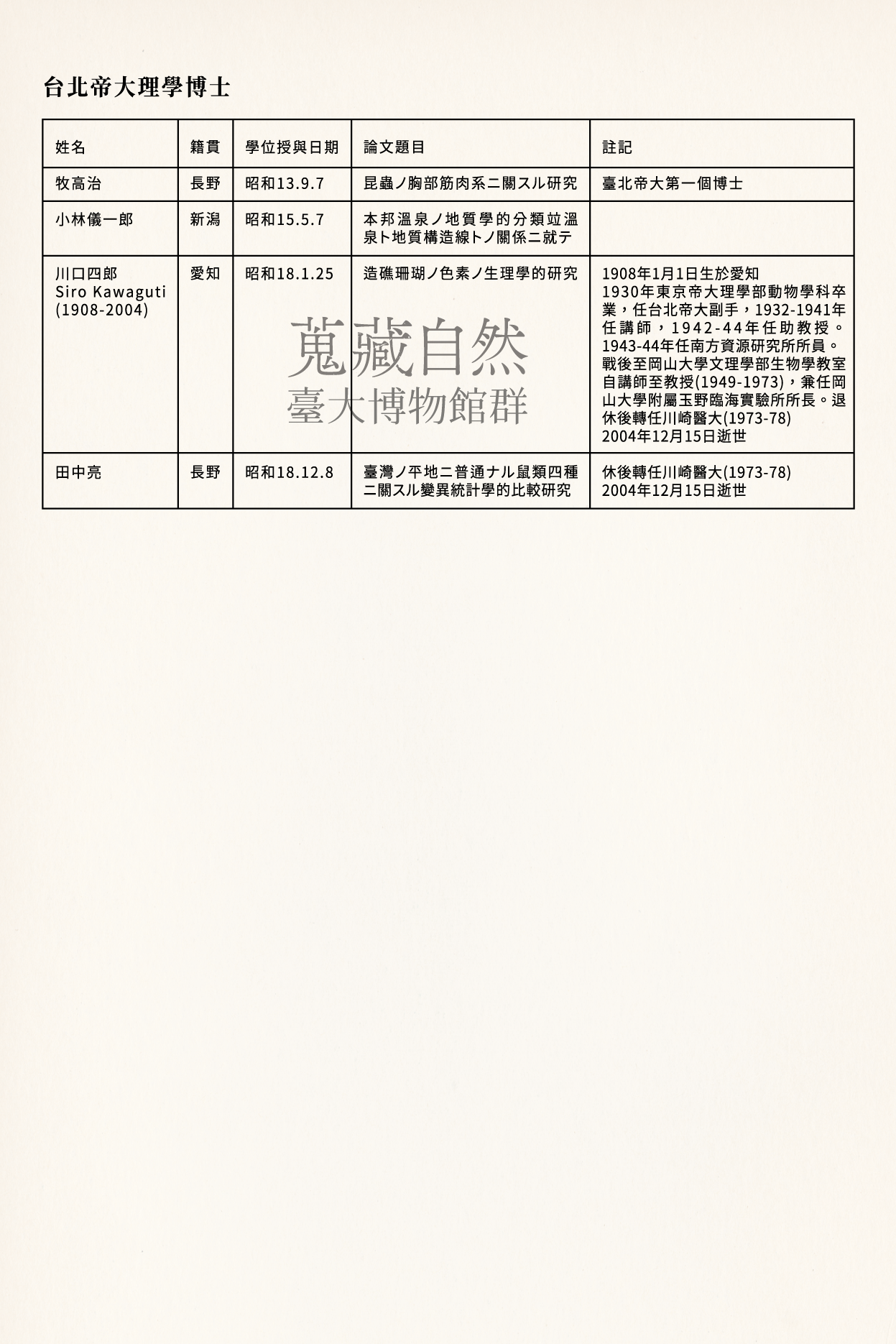帝大概況Overview
臺北帝國大學的自然史研究
Natural history study at Taihoku Imperial University
臺北帝國大學自然史研究業績
Research Accomplishments in Natural History
臺北帝大建校之初延攬而來的教授都是一時之選,雖然硬體建設有待完成,但是各領域的研究成果仍很可觀,採集的標本與發表論文均相當豐富。
依臺北帝大的畢業生資料來看,在1931-1943年間文政學部總共有323名,理農學部則有274名的畢業生(包含理農分家後的合計數)。以理農學部而言,每年的畢業生都在40名以下,以農學和農藝化學科為多數。生物學科的畢業生總共只有25名,而地質學科有3名。
Taihoku Imperial University signed up a roster of renowned research figures at its founding. Despite the fact that hardware and buildings had yet to be constructed, the number of collected specimens and published papers had been remarkable, showcasing outstanding accomplishments across disciplines.
According to the data on its graduates by Taihoku Imperial University, from 1931 to 1943, a total of 323 students graduated from the Faculty of Literature and Politics, while 274 students graduated from the Faculty of Science and Agriculture (including the total number of graduates after the division). For the latter, the number of graduates each year was below 40, with the majority specializing in agriculture and agricultural chemistry. Only 25 students graduated with a degree in biology, and 3 in geology.

徐慶鐘臺北帝大博士論文
徐慶鐘(1907-1996)出身臺北艋舺的客家人,曾經就讀艋舺公學校(今之老松國民小學)、臺北州立第一中學校(今之建國高級中學)、臺北高等學校理科,1928年3月臺北帝國大學創校時,徐慶鐘考進理農學部農學科就讀,1931年成為臺北帝大第一屆畢業生,留校任教並兼任臺灣總督府農業試驗研究所工作。1945年10月取得臺北帝國大學授予的農學博士學位,為第一位在臺北帝國大學獲得博士學位的臺灣人。
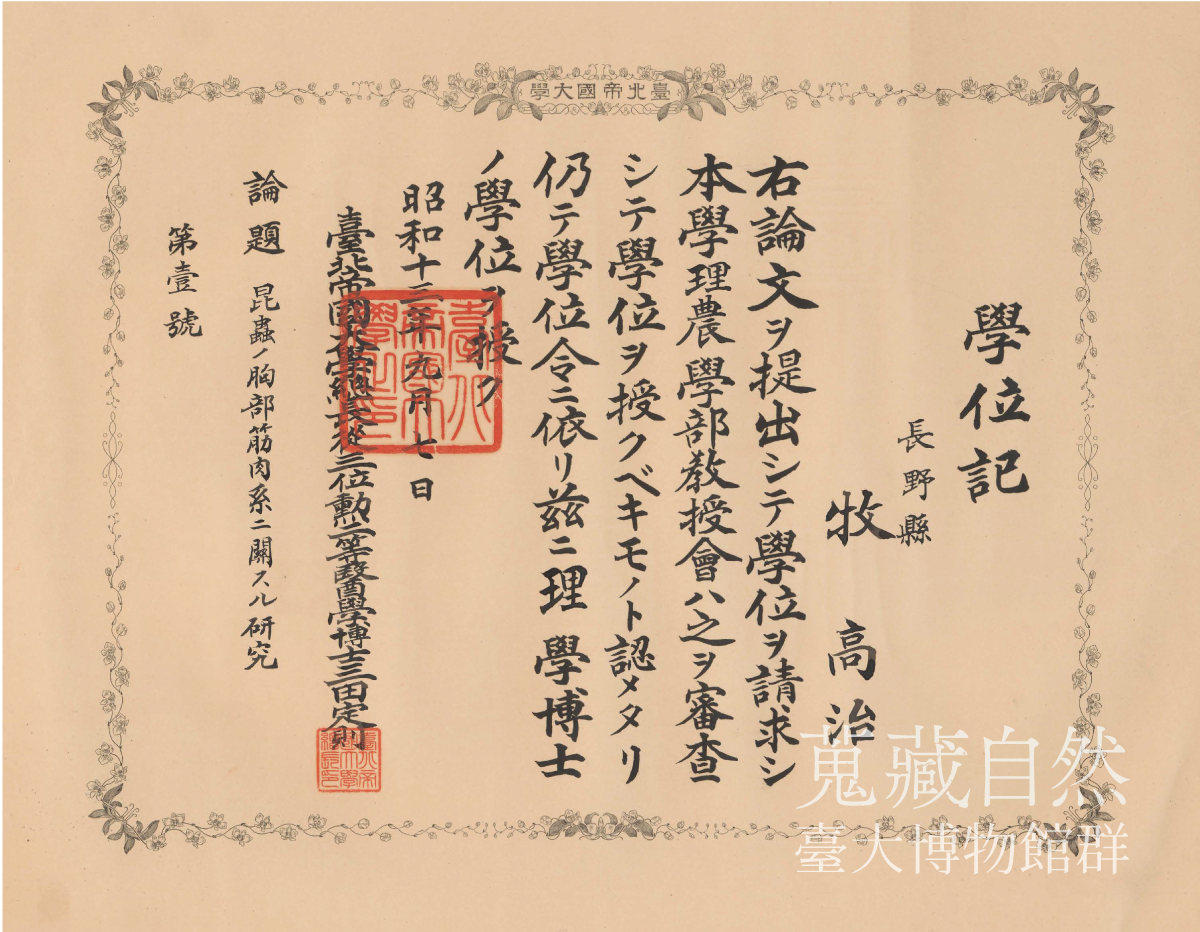
臺北帝大第一號博士畢業證書
Taihoku Imperial University No. 1 PhD Diploma
牧高治於1930年(昭和5年),進入臺北帝國大學的理農學部生物學科就讀,取得理學士卒業證書後,繼續就讀研究所,進行昆蟲胸部肌肉形態的研究。1939年以《昆蟲胸部筋肉系之研究》論文獲得臺北帝國大學首位博士學位。(提供:牧高治家族、臺大圖書館)
Born in 1930 (Showa 5), Maki Takaji entered the Department of Biology in the College of Science and Agriculture, Taihoku Imperial University. After obtaining a bachelor’s degree in science, he conducted research in the thoracic musculature of insects at graduate school. In 1939, he obtained the first PhD diploma with a dissertation titled “Studies on The Thoracic Musculature of Insects.”
理農學部設置與建築
The Establishment and Architecture
of the Faculty of Science and Agriculture
臺北帝大理農學部自然史研究相關講座學科所在建築空間場域,許多仍在臺大校園中,但有些已改變功能,或是已被拆除。這些空間及其所藏藏品,是自然環境與資源的重要基地,分別為生物學教室-動物學教室等(動物博物館舊址)、腊葉館(植物標本館)、附屬植物園(傅園現址)、昆蟲學.養蠶學教室(昆蟲標本館現址)、畜產學教室、家畜衛生實驗室(地質系館及地質標本館現址)、圖書館事務室、書庫及閱覽室(校史館現址),至今幾乎都保留其教學研究與博物館的功能。
The Faculty of Science and Agriculture’s lectures on natural history took place in many of the architectural spaces on the campus of National Taiwan University. However, some have been repurposed, while some have been demolished. These spaces and the collections within are essential archives for the natural environment and resources; these include the biology classroom and zoology classroom (the old site of the Museum of Zoology), the herbarium (TAI Herbarium), the Taihoku botanic garden (the current site of Fu Ssu-nien Memorial Garden), the entomology and sericulture classroom (the current site of NTU Insect Museum), animal science classroom, animal health research laboratory (the current site of Department of Geosciences and NTU Geo-specimen Cottage), the library’s office, stacks, and reading room (the current site of NTU History Gallery), almost all of which have retained their teaching, research and exhibit purposes.
從理農學部到理學部和農學部
From the Faculty of Science and Agriculture,
to the Faculty of Science and Faculty of Agriculture
臺北帝大理農學部創辦的宗旨,「所有學科科目以臺灣為主,以熱帶、亞熱帶為對象進行研究,蒐集該地區特有的動物、植物、生產物等之資料,以追求有地域特色的研究成果。」。
理農學部下設4個學科:生物學、化學、農學,及農藝化學;以及植物學、動物學、地質學、氣象學、化學、生物化學、農藝化學、植物病理學、應用菌學、昆蟲學·養蠶學等10個講座。和自然史直接相關的講座則有4類:植物學、動物學、昆蟲學·養蠶學,以及地質學。
1943年理農學部改組為理學部和農學部,和自然史研究相關的4個專攻,改為4個學科,其中的3個在理學部(動物、植物、地質),而昆蟲學·養蠶學則屬於農學部。
The founding goal of the Faculty of Science and Agriculture is "to pursue studies of regional features; all of the disciplines will be focused on Taiwan, using tropical and sub-tropical regions as subjects of study to collect data on endemic animals, plants and production."
Oshima Kintaro, the first Dean of the Faculty of Science and Agriculture, put forward a new concept of "integration of Science and Agriculture". It is unique feature of Taipei Imperial University that is different from other Imperial Universities. The students of Faculty of Science and Agriculture can choose the same major even belong different disciplines. The students of agriculture and biology can choose major of entomology, and each have Bachelor degree of Agriculture or Science. Dr. Oshima believes that this adjustment is "integration of Science and Agriculture", and the beginning of the early integration of the Faculty of Science and Faculty of Agriculture of Taipei Imperial University.
The Faculty consists of four disciplines—biology, chemistry, agriculture, and agricultural chemistry–as well as ten lectures on botany, zoology, geology, meteorology, chemistry, biochemistry, agricultural chemistry, phytopathology, applied mycology, entomology and sericulture. Four lectures are directly linked to natural history study: botany, zoology, entomology, and geology.
In 1943, the Faculty of Science and Agriculture was divided into the Faculty of Science and the Faculty of Agriculture. "Specializations" were changed to "subjects", where three (zoology, botany, geology) remained in the Faculty of Science and one (entomology) in the Faculty of Agriculture.
